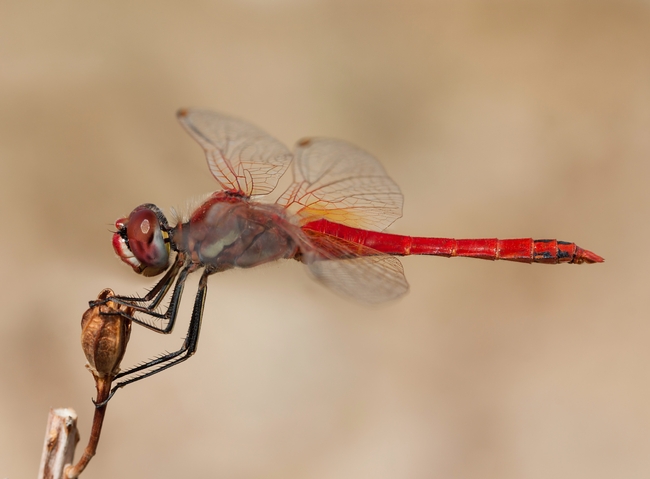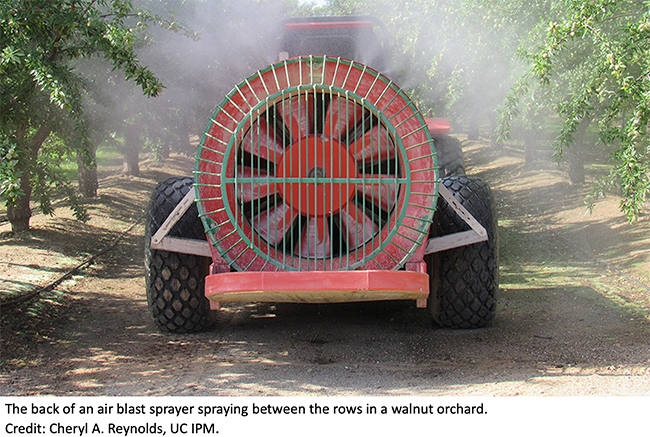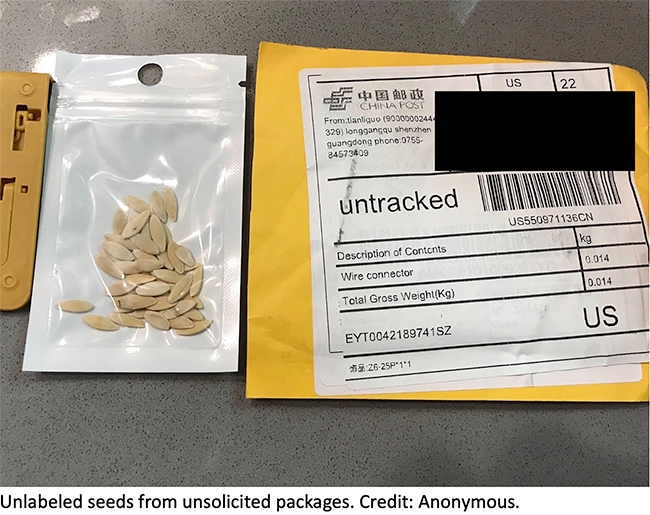- Author: Cheryl Reynolds
We're excited to announce that a brand-new online course on air blast spray calibration is now available. This course was developed by Lynn Wunderlich, University of California Cooperative Extension (UCCE) farm advisor for the Central Sierra, and Franz Niederholzer, UCCE farm advisor for Colusa, Sutter, and Yuba counties.
If you are a grower, pest control adviser, or pesticide applicator working in trees and vines, then this course is for you! You will learn the basic principles of spray calibration, take a close look at the basic components of a sprayer, perform calculations needed for calibration, and take a look at how factors such as droplet size, nozzle type, and weather conditions influence drift and spray coverage. This course also explains the conditions for pesticide applications under the 2018 Pesticide Use Near Schoolsites regulation. Air Blast Spray Calibration has been approved by DPR for a total of 2.5 continuing education units (CEUs), including 0.5 hour of Pesticide Laws and Regulations and 2.0 hours of Other.
Fall is here and 2020 is winding down; it's time to complete your continuing education units and submit your California Department of Pesticide Regulation (DPR) renewal packet. If you are a DPR license or certificate holder and your last name begins with the letters A through L, then 2020 is your year to renew. Renewing now guarantees a quick turnaround time and having enough time to resolve any problems before your license expires. DPR encourages all license holders to send in renewals November 1 to ensure license renewal by January 1, 2021. Why not check out the online courses the UC Statewide IPM Program (UC IPM) has to offer?
Four of UC IPM's most-wanted courses are offered at an early-bird price until November 1st! You can save an additional $20 by purchasing the 4-course bundle for only $85 rather than each course individually.
- Proper Pesticide Use to Avoid Illegal Residues (2 hours Laws and Regulations – early-bird price $40; full price $80)
- Proper Selection, Use, and Removal of Personal Protective Equipment (1.5 hours Laws and Regulations – early-bird price $30; full price $60)
- Pesticide Resistance (2 hours Other – early-bird price $20; full price $40)
- Pesticide Application Equipment and Calibration (1.5 hours Other – early-bird price $15; full price $30)
Many of our courses are now credited not only by DPR for continuing education hours, and also by the California Structural Pest Control Board (SPCB), Certified Crop Advisor (CCA), the Western Chapter of the International Society of Arboriculture (WCISA), and the Arizona Department of Agriculture.
- Author: Rose Marie Hayden-Smith
The University of California Cooperative Extension (UCCE) 4-H Program is offering a free, virtual, after-school club for youth ages 9-12. The club – Sustainable You! – will focus on sustainability issues, including land, water, energy, food, and air. Youth do not need to be a member of 4-H to join, and again, there is no cost for participating.
A typical meeting will include:
- An introduction to a sustainability topic with an ice breaker;
- A discussion or video on the day's topic;
- A demonstrated activity;
- Games and art; and
- An activity that youth can do on their own.
The program consists of weekly meetings, which will be held on Tuesdays from 3:30-4:30. It runs for 11 weeks, from September 29ththrough December 8th. The virtual after-school club is part of the online educational programs being organized by UCCE Ventura County. Learn more here.
While there is no cost, registration is required. Attendance is limited to no more than 50 youth.
The program is organized by UCCE educators, in partnership with the City of Ventura Environmental Sustainability Division and Ventura Water.
For more information, email Susana Bruzzone Miller.
The University of California Cooperative Extension (UCCE) is part of the University of California Agriculture and Natural Resources division. UCCE advisors offer research-based information in support of agriculture and natural resources. We also offer community-based educational programs, such Master Gardener and 4-H.
4‑H provides experiences that enable young people to learn by doing. Since 1914, 4‑H has welcomed young people of all beliefs and backgrounds, giving them a voice to express who they are and how they make their lives and communities better.
Through life-changing 4‑H programs, nearly six million kids and teens across the US have taken on critical societal issues, such as addressing community health inequities, engaging in civil discourse and advocating for equity and inclusion for all.
Photo by Guillaume de Germain for Unsplash.

- Author: UC Integrated Pest Management
Have you had unexpected seeds show up in the mail? Unknown seeds could be invasive plants, contain invasive insects, or have plant disease causing agents. Here's what the United States Department of Agriculture Animal Plant and Health Inspection Service (USDA APHIS) has to say about it.
USDA Investigates Packages of Unsolicited Seeds
USDA is aware that people across the country have received suspicious, unsolicited packages of seed that appear to be coming from China. USDA's Animal and Plant Health Inspection Service (APHIS) is working closely with the Department of Homeland Security's Customs and Border Protection, other federal agencies, and State departments of agriculture to investigate the situation.
USDA urges anyone who receives an unsolicited package of seeds to immediately contact their State plant regulatory official or APHIS State plant health director. Please hold onto the seeds and packaging, including the mailing label, until someone from your State department of agriculture or APHIS contacts you with further instructions. Do not plant seeds from unknown origins.
At this time, [USDA does not] have any evidence indicating this is something other than a “brushing scam” where people receive unsolicited items from a seller who then posts false customer reviews to boost sales. USDA is currently collecting seed packages from recipients and will test their contents and determine if they contain anything that could be of concern to U.S. agriculture or the environment.
USDA is committed to preventing the unlawful entry of prohibited seeds and protecting U.S. agriculture from invasive pests and noxious weeds. Visit the APHIS' website to learn more about USDA's efforts to stop agricultural smuggling and promote trade compliance.
- Author: Rose Marie Hayden-Smith
Happy summer! It's time to get the barbecue grilling and the pool party started. To keep your summer healthy and fun, UC ANR offers some important safety tips.
Food safety
Food poisoning is a serious health threat in the United States, especially during the hot summer months. According to the Centers for Disease Control and Prevention (CDC), 1 in 6 Americans suffer from a foodborne illness each year, resulting in thousands of hospitalizations and 3,000 deaths.
Both the CDC and U.S. Department of Agriculture (USDA) suggest four key rules to follow to stay food safe:
- Clean: Clean kitchen surfaces, utensils, and hands with soap and water while preparing food. Wash fresh fruits and vegetables thoroughly under running water.
- Separate: Separate raw meats from other foods by using different cutting boards. And be sure to keep raw meat, poultry, seafood and eggs away from other items in your refrigerator.
- Cook: Cook foods to the right temperature; be sure to check internal temperature by using a food thermometer.
- Chill: Chill raw and prepared foods promptly.
Here are some additional tips from the USDA. Be sure to check out the CDC's comprehensive food safety website, which also has materials in both Spanish and English. For food safety tips in real time, follow USDA Food Safety on Twitter.
Summer also means more outside grilling, which can pose unique food safety concerns. Before firing up the barbecue, check out these five easy tips from UC Davis.
Handling food safety on the road
Before you take off on a road trip, camping adventure or boating excursion, don't forget to consider food safety. You'll need to plan ahead and invest in a good cooler.
Remember, warns the USDA, don't let food sit out for more than one hour in temperatures above 90 degrees F. And discard any food left out more than two hours; after only one hour in temperatures above 90 degrees F.
If there are any doubts about how long the food was out, it is best to throw it out!
Get more food safety tips for traveling from the USDA.
Avoid heat illness
“Summer can be a time for fun and relaxation, but in warm climates, we need to stay aware of the signs of heat illness and help keep our family members and co-workers safe,” says Brian Oatman, director of Risk & Safety Services at UC ANR.
“UC ANR provides comprehensive resources on our website, but it's designed around California requirements for workplace safety.” But, Oatman notes, much of the information applies.
“The training and basic guidance – drink water, take a rest when you are feeling any symptoms and having a shaded area available – are useful for anyone at any time.”
To increase your awareness of heat illness symptoms – and to learn more about prevention – Oatman suggests a few resources.
“Our Heat Illness Prevention page has many resources, including links for training, heat illness prevention plans, and links to other sites. One of the external sites for heat illness that I recommend is the Cal/OSHA site, which spells out the basic requirements for heat illness prevention in the workplace. It's also available in Spanish."
For those on the go, Oatman also recommends the National Institute for Occupational Safety and Health (NIOSH) mobile heat safety app.
- Author: Annemiek Schilder
In this blog series, Dr. Annemiek Schilder, Director, UCCE Ventura County and Hansen Agricultural Research and Extension Center, shares her observations about the natural world across the seasons. As she says:
"Gently observing your surroundings with curiosity will teach you some amazing things. There are so many fascinating things happening under our noses, only wanting for an observant eye."
The other day I spotted a gorgeous red dragonfly in my garden. He – yes, it was a male - cocked his head towards me several times and studied me with his big compound eyes as I inched closer to take a picture. He waited patiently while I tried to get him into focus, then eventually flew off. The flame skimmer dragonfly (Libellula saturata) is common in California and the Western US. Males have an orange-red body with orange sections on the wings, whereas the female is paler with an amber tinge along the upper edge of the wings.
Dragonflies speak to the imagination with their bright colors, transparent lacy wings and aerial acrobatics, inspiring poets and artists through the ages. They are often seen as a good omen and a source of comfort during times of loss. In Japan, the dragonfly is a symbol of strength, courage, and happiness whereas to Native Americans, dragonflies signify change, transformation and healing.
Dragonflies belong to the insect order Odonata, which means “toothed”, for their serrated mandibles − entomology-speak for jaws with teeth-like projections. Adult dragonflies feed on soft-bodied insects such as mosquitoes, flies, moths, butterflies, and flying ants, ambushing them in mid-flight. They have almost 360-degree vision due to their huge compound eyes and can see many more colors than humans can. Dragonflies are amazing flyers, achieving speeds over 30 miles per hour, and are able to fly forwards, backwards and remain stationary with the help of flight muscles that control each of the four wings separately.
The flame skimmer dragonfly is mostly found near warm ponds or slow-flowing streams. In colder regions they are a common sight around hot springs. The larvae, also called nymphs or naiads, spend 2 or more years living in shallow water where they feed on mosquito larvae and other aquatic insects, small fish and tadpoles. In order to grow, they have to molt (shed their skin) multiple times. Adult dragonflies emerge in the spring and live for about 6 months during which time they have to find a mate. As I was observing two flame skimmers chasing each other, I was reminded that dragonflies can be fiercely territorial. After mating, the female lays her eggs by dipping her abdomen repeatedly in the water while hovering above the surface.
Watch the life cycle of dragonflies in this National Geographic video.
Related Reading:
Fireworks in the Garden: Octopus Agave
Photo by Sensei Minimal on Unsplash









